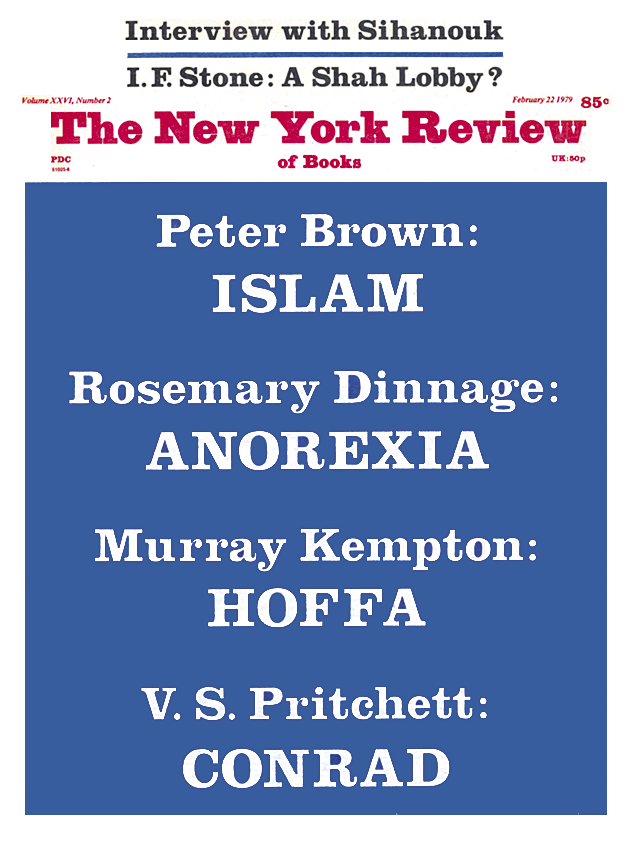Just before he went into a New York hospital suffering from exhaustion, I spoke to Prince Norodom Sihanouk of Cambodia about the last ten years in his country’s history.
Talking about the 1960s, when he managed to keep the Vietnamese war from spilling far across Cambodia’s frontiers, Sihanouk said,
In the Sixties Cambodia survived because Lyndon Johnson rejected all the requests of his military that the United States invade Cambodia and remove Sihanouk. He thought the consequences would be very dangerous. But Nixon accepted those ideas.
In March 1969, the Nixon administration began a secret B-52 bombing campaign against Vietnamese communist sanctuaries just inside Cambodia. Subsequently Nixon and Kissinger have both claimed that Sihanouk authorized such bombing so long as it was kept secret. He was said to have given his approval in a meeting with Chester Bowles, US ambassador to Delhi, in January 1968. Sihanouk said, “I told Chester Bowles, en passant, that the United States could bomb Vietnamese sanctuaries, but the question of a B-52 campaign was never raised.”
One result of the B-52 campaign was to push the communists further into Cambodia and into increasing conflict with Sihanouk’s forces; his generals, especially General Lon Nol, became more and more disturbed. “I was not happy when the Vietnamese came further and further into Cambodia in 1969,” Sihanouk said.
Nor was Lon Nol. But what separated me and Lon Nol in 1970 was that he wanted to make war against the communists and invite the United States into Cambodia. I knew that if we did so we would be completely involved in the Vietnamese war; we would lose our peace and everything in Cambodia would be destroyed.
If the US had refused to help Lon Nol after the coup [which removed Sihanouk in March 1970] he would have collapsed. I would have returned and stopped the war. This didn’t happen because Nixon and Kissinger did not want Sihanouk back. Nixon called Cambodia his “best investment”; Kissinger hated me. For most of the war he refused to see me—until the Khmer Rouge were so strong it was too late.
In 1970 the Khmer Rouge were only a few hundreds. In 1973 the Vietnamese tried to make them negotiate with Lon Nol but it was too dangerous for them. They would then have had to share power and they wanted it all alone. They got it in 1975.
I asked Sihanouk about the last three years he has spent in house arrest in a Phnom Penh which the Khmer Rouge emptied after their victory in April 1975. “I only saw Pol Pot and the other Khmer Rouge leaders two or three times a year,” he said.
I lost two sons, two daughters, and ten grandchildren. I don’t know whether they are wounded, dead, or alive…. I did not really know what was happening in my country. The BBC and the Voice of America said it was terrible; every day I had to think about the possibility of being executed.
When I asked him to explain Khmer Rouge brutality, he spread his hands in a gesture of incomprehension:
Well, many of the soldiers I saw were only twelve or thirteen years old. Then their leaders were very ambitious. They wanted their names in history. They wanted to establish the most advanced and purest form of communism in the world. They told me that was their plan…. I know only that basic human rights were suppressed—no love, no families, no communications.
Sihanouk is very uncertain about what he should do now. He said he represented the Cambodian regime in his UN protests against the Vietnamese invasion
because, despite its abuses of human rights, the regime is the only legal government of Cambodia. I feel capable of negotiating a settlement with Hanoi; I know the Vietnamese well. But Pol Pot would not allow it. For the future, we shall see. If we don’t find a solution soon, the Vietnamese will be in Cambodia forever.
Asked about the lessons of the last ten years, Sihanouk said that there was no one country to blame for Cambodia’s present state. The principal responsibility, he said, lay with Nixon and Kissinger. “Lon Nol. was nothing without them and the Khmer Rouge were nothing without Lon Nol. Mr. Nixon and Dr. Kissinger gave the Khmer Rouge involuntary aid because the people supported the communist patriots against Lon Nol. By expanding the war into Cambodia, Nixon and Kissinger killed a lot of Americans and many other people, they spent enormous sums of money—$4 billion—and the results were the opposite of what they wanted. They lost all of Indochina to the communists, and they created the Khmer Rouge.”
—January 17
This Issue
February 22, 1979


